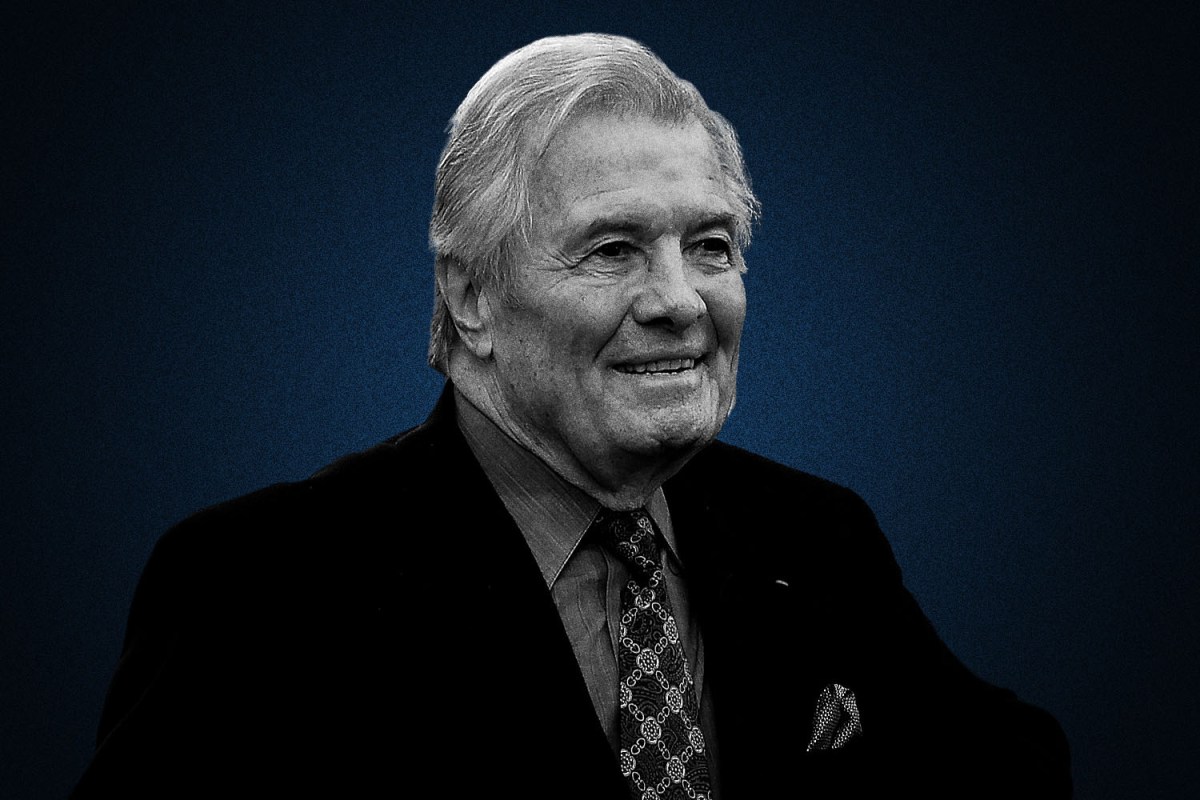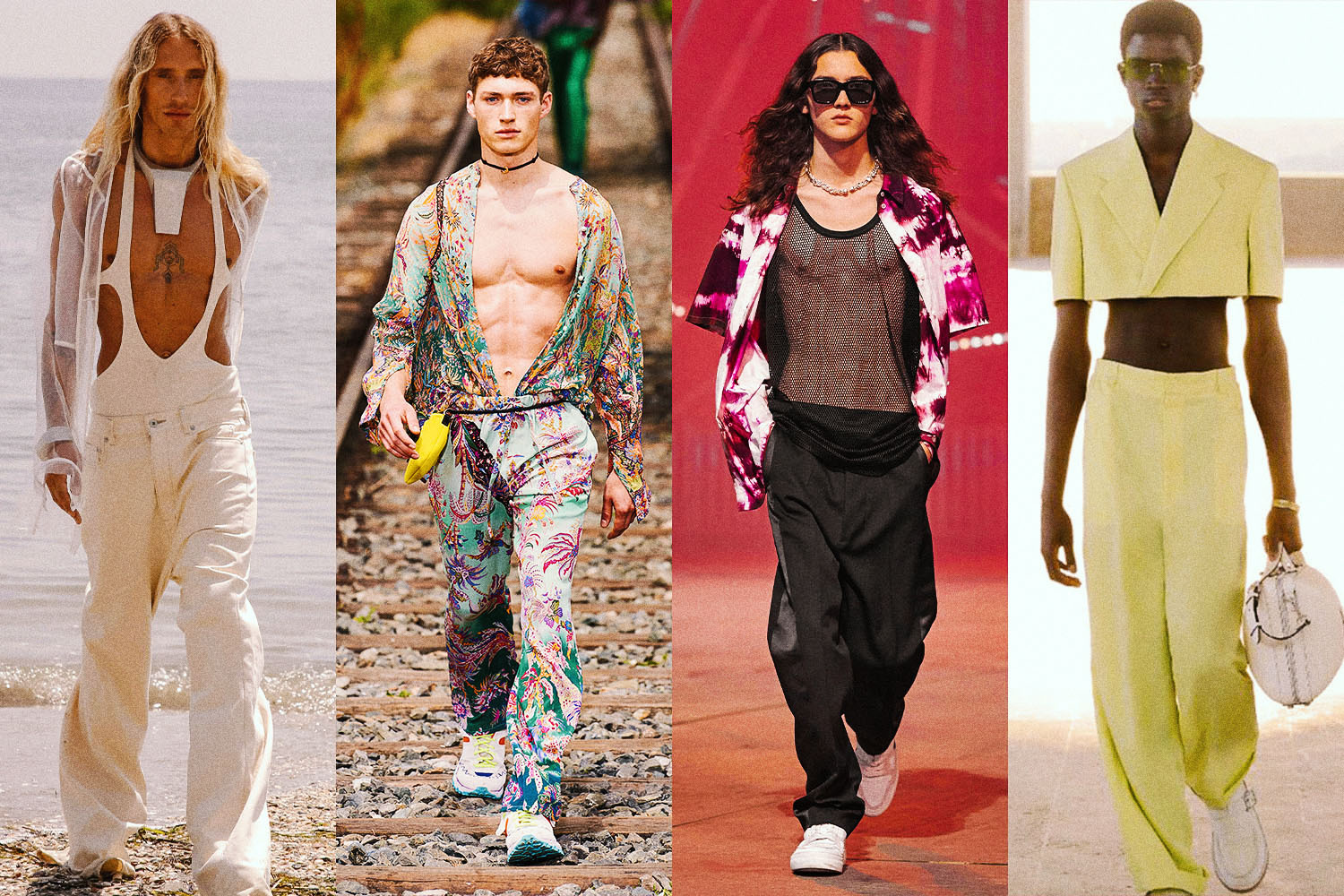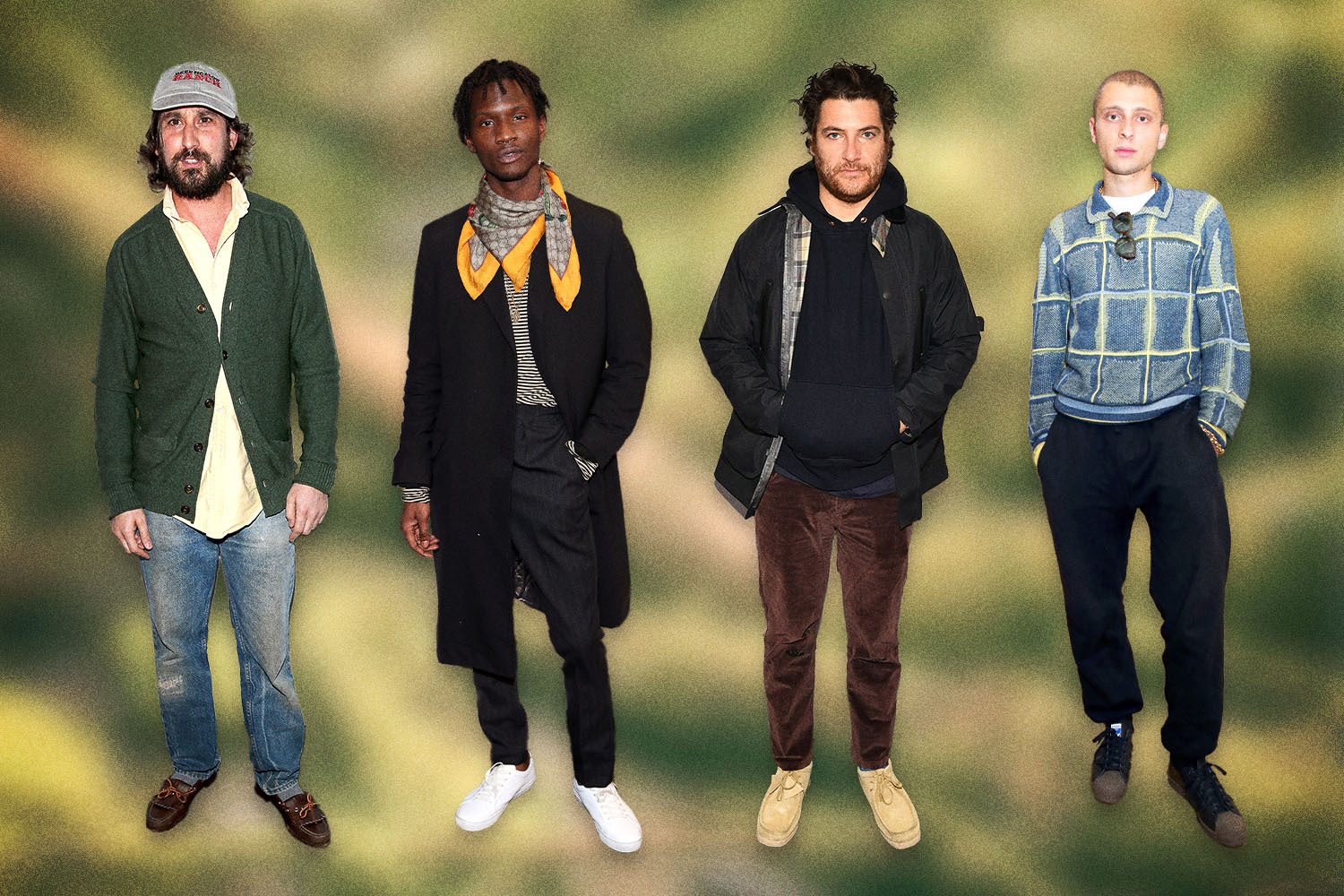If you live, as I do, in a family with food at the heart of it, there’s a strong chance you grew up watching Jacques Pépin. Nary a holiday went by that my mother — an Italian and exceptional homecook — didn’t refer to Pépin for a cook time or temperature; he’s always been our culinary north star.
As a child Pépin was the man who cooked on PBS; a comforting presence making unpretentious yet refined foods to fill the soul. Now, as an adult — as well as someone who writes about menswear for a living — I appreciate Pépin in an entirely new light: as a style icon. Watching Pépin cook on television (or, most recently, on his Facebook page, where he broadcasts recipes to his 1.4 million followers), I’m always struck at how simply and timelessly Pépin is dressed. His clothing wears effortlessly on him, but even as it serves its functional role as he cooks, he looks classy and well tailored, which is why he was an obvious choice to include on my list of the best dressed men over 50.
When I spoke with Pépin a few weeks ago, he was every bit the affable gentleman I grew to love as a child. Warm and disarming, he spoke to me for nearly an hour about everything from the importance of feeling comfortable in his clothes to the similarities in how he approaches cooking and dressing. Plus, of course, the 30 bow ties his mother made him.
InsideHook: How would you describe your personal sense of style?
Jacques Pépin: Pretty casual, I would say. Especially now in the last year during the pandemic it’s been even more casual, downright very simple. Because we haven’t had any occasion of getting dressed, or not many. So occasionally I like to wear a bow tie or thing like that, a regular tie, but I haven’t had much of that occasion during the last year. So it’s been pretty straightforward. And for me, working in the kitchen, I wear you know, either a shirt or a T-shirt or a light sweater, pants, and that’s about it. Something that the dog can lick when the sauce falls on it.
How do you think your personal style has evolved over the years?
I don’t think it’s changed that much. Now my daughter often picks up some clothes for me, she decides to buy one thing or another. In fact, my wife used to pull my clothes out and my daughter does that too, because she’ll say, “you have that shirt for 15 years, just get rid of it.” And I use a fair amount of denim also, denim shirts and all of that. I feel comfortable in that, too. So I don’t really think that I have any special style; sometimes I buy stuff because I go to a store and they sell 2-for-1, and that’s probably the way I choose clothes more than anything else.

What do you like to wear when you have the occasion to dress up?
Well I have a couple of things. The day before yesterday I wore kind of a light summer shirt with a blue kind of a checkered [pattern], and I had a jacket which I had probably for 15 years. It’s a black jacket but it’s not in heavy material; it’s almost like the material that is in a shirt. So with this, I have a pair of khaki pants, and that’s it. I have to feel comfortable, and that’s why one of the best clothes that I’ve worn for sometime now is the guayabera. The guayabera is a white shirt, sometimes with a little fancy around the collar, with long sleeves. If you go to a party in Costa Rica or a place like this, if you go to a formal party, you wear it as a shirt, but it has two pockets — a pocket on the side, a pocket on top — like a jacket, but it’s a shirt. I went to the consulate there, to a formal party, and a man can wear this, which is the only place in the world that I think it makes sense. Because usually a man has to wear a bow tie and a jacket. So it’s kind of elegant but very, very comfortable for being just a shirt.
I know you love scarves. Do you have any places that you like to shop for scarves or any scarves that you own that are particularly sentimental?
Oh yes. I have a few from Times Square which I have for over 30 years, that friends have given me, and some from my wife, and some from my daughter even. So yeah, I have a lot of old, old scarves that I use in the winter, and for me, they’re very soothing, too, and it means something. Scarves probably more than anything else, for me.
Do you have other pieces in your wardrobe that are sentimental or that you hold onto or that have a lot of meaning?
Yes, pocket squares. Most of those my wife bought for me and some from my daughter, so that I will keep. Of course I have some white and black ones with tuxedos, [but] I have other different colors that I like to wear.
What has inspired your way of dressing over the years?
I always thought that getting dressed nicely to go to a restaurant was very important. You know, if I roast a chicken by myself, to serve for my wife and me, I will do it properly but casually. And if my wife calls and says well, “Christine and Tom are coming for lunch,” then I will add to it. If I cook only for my wife and me we call that you know, home cooking. But now I have a friend coming, so I put some mushrooms around the chicken and maybe I do a salad or a couscous, and that’s going to be bourgeois cooking, you know?
All of a sudden, it’s Christmas — I still roast the chicken the same way, but I maybe glaze it with cognac and I put wild mushroom in it, and I add a cream sauce, and I start with maybe a souffle. At that point, we put flowers on the table, change clothes, I dress up, I grab a tie — so the whole thing becomes haute cuisine or whatever. But it’s still the same chicken.
If I spend the money to go to those places that cost a fortune with haute cuisine, I don’t really necessarily want all the men to be in bow ties, but I like for the people to be well dressed, elegant. It goes with the food. You know, I wouldn’t want to dress the same way I go to get a hot dog at the corner of the street, I think it’s kind of a disservice. There is something which works with the tablecloth, with the flowers, with the light, and with the expensive menu, the time you spent talking.
You’ve mentioned you love bow ties.
Did I tell you, I have about 40 bow ties, and probably 30 of those, maybe more than 30, were made by my mother. Probably over 30 years ago, 40 years ago. She came to visit from France, so I took us to New York, and I went to Bloomingdales to buy a bow tie, and at that time, the bow tie was like 25 dollars. She said, “Oh my god! That’s a big, big price for that piece of material.” And she was very good with the sewing machine and so forth; when we were kids she did all our clothes. She said, “I’m going to make some for you, some of those, give me one to measure.” And we went to a store where we bought, I don’t know, many remnants of different color and material and so forth, and I think she did over 20, 30 bow ties for me, and I still have those. It cost nothing. And I recognize them because the commercial ones that I buy, you can extend it shorter, longer, there is a little thing on the back — these ones are sewn just to my size, you cannot extend it out, so I recognize that’s hers.
Do you think there’s a connection between how you approach dressing and how you approach cooking?
That’s a good question. I was just talking about the way I approach painting and the way I approach cooking, and again, there are similarities. When I start a painting, I don’t know what I’m going to do exactly, and then at some point, the painting takes on a life of its own and I react to it. And when I cook, it’s the same way, you know: you taste, you adjust, you taste, you adjust, you move on with the food. And I guess in dressing also, it’s something a bit attentive, a bit natural, I don’t think that I have a very special way of dressing, but I know that at some point if you give me certain clothes, I’d say, “I would never put that on.” So yes, I think you have to feel yourself and feel comfortable, to feel that it fits you, and the same thing with the kind of food that you eat or the kind of painting that you look at — I think there is similarity without any question.
I think that even the women that I find the most elegantly attired for me, or men, are often someone that I don’t even realize has beautiful clothes to start with. They just work together so well. You don’t even think of the clothes; you think the clothes are relatively ordinary and then you look closer and you realize, there is that elegance. There is something very natural but not showy at all, which is just someone who understands exactly where it belongs, where it fits. You should not try to be who you are not.
Join America's Fastest Growing Spirits Newsletter THE SPILL. Unlock all the reviews, recipes and revelry — and get 15% off award-winning La Tierra de Acre Mezcal.























